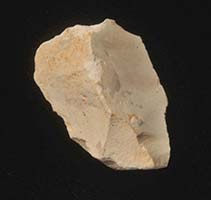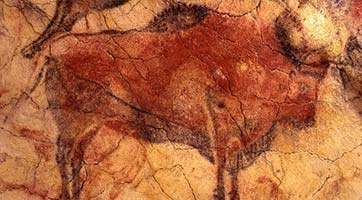The prehistory of the Iberian Peninsula begins with the arrival of the first hominins 1.2 million years ago and ends with the Punic Wars, when the territory enters the domains of written history. In this long period, some of its most significant landmarks were to host the last stand of the Neanderthal people, to develop some of the most impressive Paleolithic art, alongside southern France, to be the seat of the earliest civilizations of Western Europe and finally to become a most desired colonial objective due to its strategic position and its many mineral riches.
The Iberian Peninsula was first inhabited by anatomically modern humans about 32,000 years BP (Before Present).

 The earliest record of hominids living in Western Europe has been found in the Spanish cave of Atapuerca; a flint tool found there dates from 1.4 million years ago, and early human fossils date to roughly 1.2 million years ago.
The earliest record of hominids living in Western Europe has been found in the Spanish cave of Atapuerca; a flint tool found there dates from 1.4 million years ago, and early human fossils date to roughly 1.2 million years ago.
Modern humans in the form of Cro-Magnons began arriving in the Iberian Peninsula from north of the Pyrenees some 35,000 years ago.
The most conspicuous sign of prehistoric human settlements are the famous paintings in the northern Spanish cave of Altamira, which were done c. 15,000 BC and are regarded as paramount instances of cave art.
Furthermore, archeological evidence in places like Los Millares and El Argar, both in the province of Almería, and La Almoloya near Murcia suggests developed cultures existed in the eastern part of the Iberian Peninsula during the late Neolithic and the Bronze Age.
Spanish prehistory extends to the pre-Roman Iron Age cultures that controlled most of Iberia: those of the Iberians, Celtiberians, Tartessians, Lusitanians, and Vascones and trading settlements of Phoenicians, Carthaginians, and Greeks on the Mediterranean coast.

